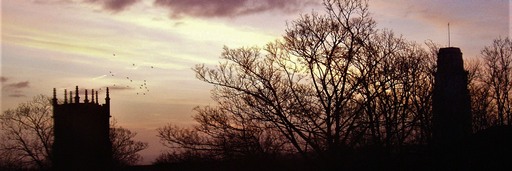

Biodiversity
Action
Plan

Built-up areas and gardens. The built environment and its road verges, gardens, allotments and open spaces form a very significant resource for both common and vulnerable wildlife species. Their value, with that of the wider urban environment, should not be discounted.
Individual areas can be small but the combined area for built-up and amenity areas is greater than the area of ‘natural’ habitat sites.
Buildings. Pipistrelle Bats, House Sparrow, Swallow, House Martin and Swift all rely principally on our houses for their roosting and breeding requirements. Other buildings are also important with the Peregrine Falcon regularly nesting on taller buildings, including in urban Barnsley.
Parks, gardens and green spaces. Song Thrush, Dunnock, Hedgehog and many insects including butterflies and moths are supported by areas of grass and flower beds in our gardens, parks and green spaces. These provide wildlife with shelter, nesting, roosting and over-wintering sites, sources of food, and places to forage.
Flowers and flowering shrubs in gardens and parks give nectar and pollen for insects, and seeds and berries for birds and mammals. Bats and Hedgehogs as well as birds feed on the larger number of invertebrates supported. There’s often space for a bit of ‘wildness’ where wildflowers are allowed to flourish, seed and support invertebrates. Shrubs, hedges and trees offer roosting and nesting sites for birds and mammals, as well as shelter and protection from predators. Lawns and areas of grassland are also important for wildlife as described in the section on amenity grassland.
Ponds and water courses in built-up areas are important for wildlife. Garden ponds support all our amphibian species, especially Common Frog.
Waste ground. Special urban habitats develop on waste ground and derelict sites. These often contain a mix of native and alien introduced species such as Buddleia, creating a very diverse ecosystem. Whatever their origin, these sites offer many people a chance to appreciate biodiversity.
For information on how to promote biodiversity in built-up areas and gardens see the following links.
This section of the local biodiversity plan has been added to describe how to promote biodiversity in built-up areas and gardens.
Built-up areas and gardens is a Broad Habitat type in the UK BAP classification, UKHab U1
This covers urban and rural settlements, farm buildings, caravan sites & man-made sites such as industrial estates, retail parks, waste ground, urban parks & transport infrastructure.
It also includes domestic gardens and allotments.
Amenity grassland is also worth drawing attention to as a significant part of the urban environment although classified as ‘improved’ grassland.
These features bring wildlife into gardens and urban green spaces …
- Ponds and sources of water
- Areas with longer grass and wildflowers
- Borders and beds planted with nectar-rich flowering plants
- Native hedges and trees
- Log piles and wilder areas.
A variety of features helps.
Links
Designing buildings: Biodiversity in Urban Environment
RSPB: Urban Advice Pack
TCPA Green infrastructure & biodiversity
Good practice for Green Infrastructure and Biodiversity

Built-up Areas and Gardens